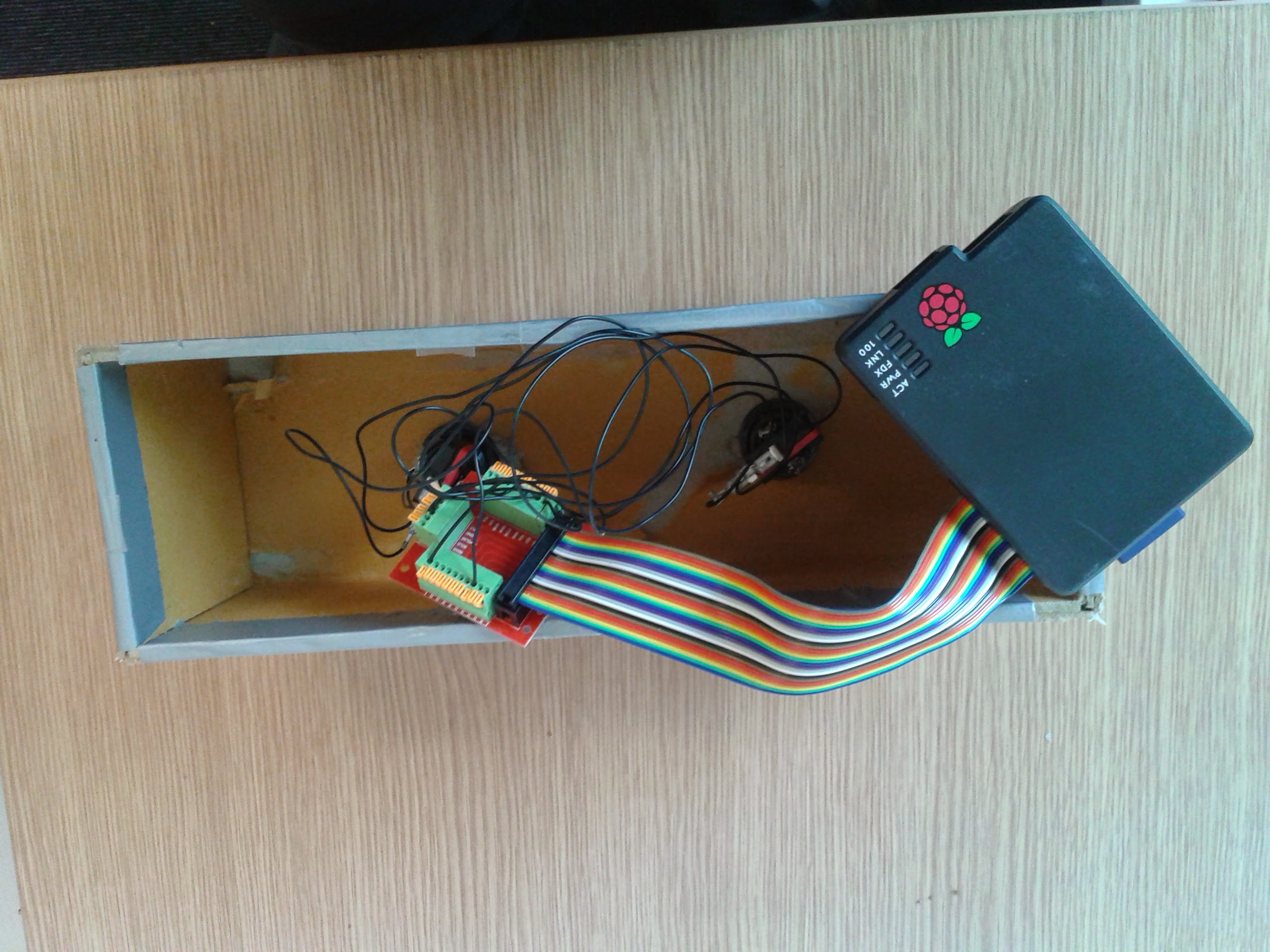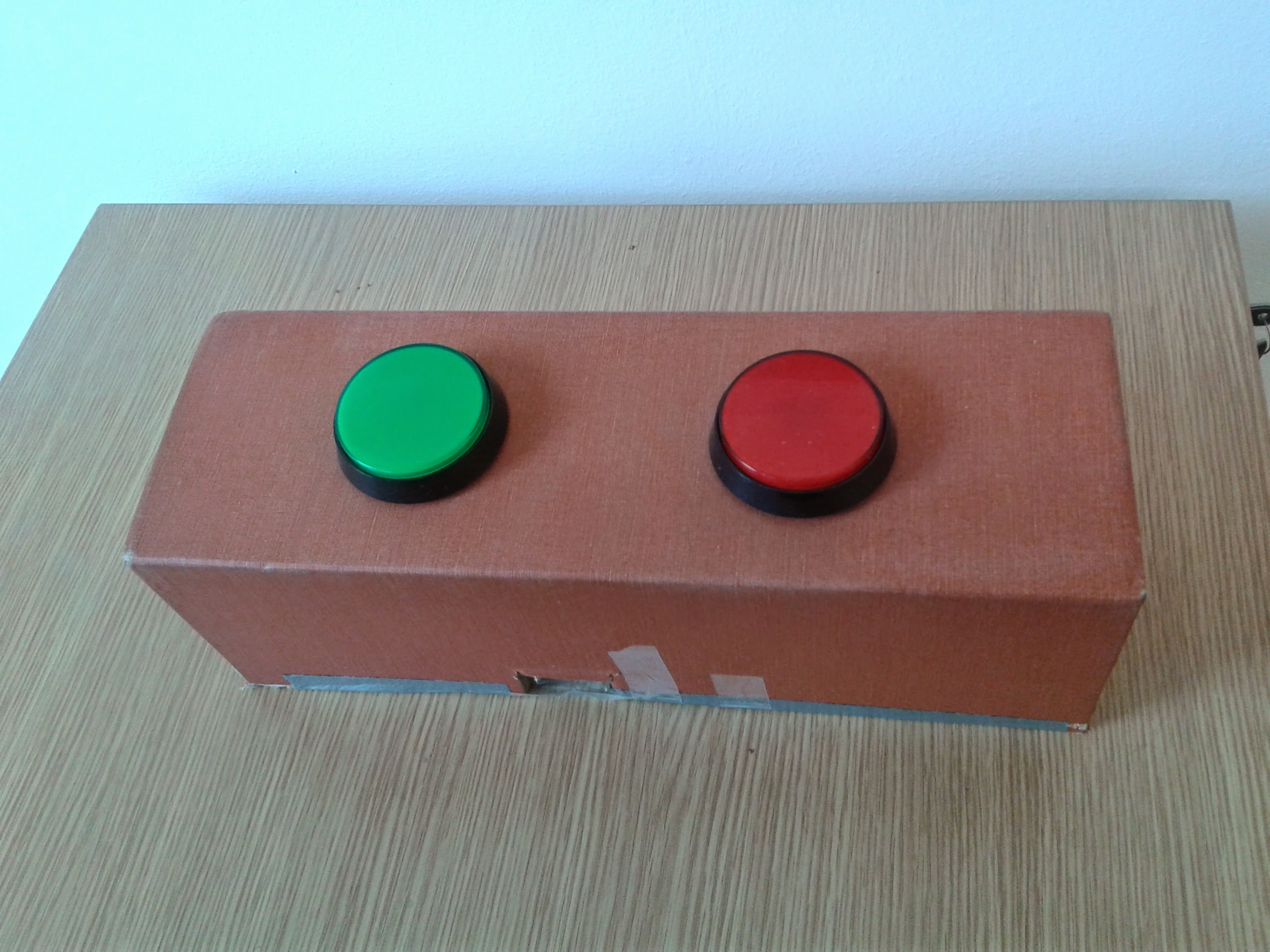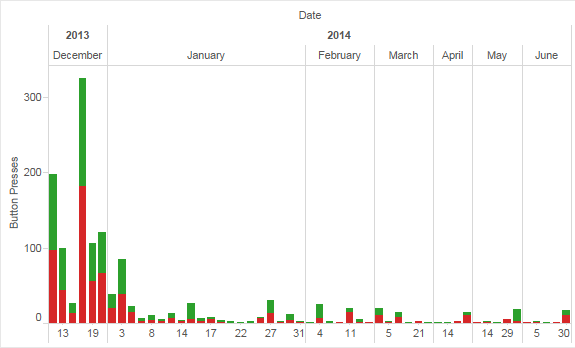The patron happy-sad-ometer prototype
10 Oct 2014Some time ago Masud Khokar (@mkhokhar) suggested it would be a nice idea to use a Raspberry Pi with a couple of buttons attached as a quick mechanism for collecting some patron satisfaction data on leaving the library.
‘Did you manage to get done, what you came to the library for today?’
We procured a Pi, some red and green buttons with LEDs, bits of wire and a break out board. Soldering not necessary, just a little wire stripping.
The Pi has the Red Hat (Pidora) flavour of Linux installed. A short python program, using the GPIO library, sets everything up and listens for button press events. When one is detected, the colour and time are logged to ‘/var/local/red_green_log’. The LED in the button is briefly lit up as a visual indication for the user.
I took a drill and hacksaw to an old pamphlet box to make a housing for the prototype.
All the bits squash inside.

Finished!

The data is collected for analysis in a Postgres database and then can be visualized within Tableau.

An interesting little project which we may get round to deploying. A nicer perspex case would be better.
The python code:
#!/usr/bin/env python2.7
from __future__ import print_function
import RPi.GPIO as GPIO
import time
import datetime
import os, errno
import sys
RED_IN = 7
GREEN_IN = 8
RED_OUT = 3
GREEN_OUT = 2
CONSOLE_PRINT = False
LOGDIR = '/var/local/red_green_log'
def mkdir_p(path):
try:
os.makedirs(path)
except OSError as exc:
if exc.errno == errno.EEXIST and os.path.isdir(path):
pass
else: raise
def red_setup():
GPIO.setup(RED_IN, GPIO.IN,
pull_up_down=GPIO.PUD_UP)
GPIO.setup(RED_OUT, GPIO.OUT)
def green_setup():
GPIO.setup(GREEN_IN, GPIO.IN,
pull_up_down=GPIO.PUD_UP)
GPIO.setup(GREEN_OUT, GPIO.OUT)
def button_pressed(channel):
if channel == RED_IN:
colour = "red"
oc = RED_OUT
else:
colour = "green"
oc = GREEN_OUT
# A bit of software switch debounce, there is also a bouncetime
# parameter to add_event_detect which does more or less
# the same thing I think.
tm_check = time.time() + 0.2
while time.time() < tm_check:
if GPIO.input(channel) == 0:
return
if CONSOLE_PRINT:
print(datetime.datetime.now().strftime('%Y%m%d-%H:%M:%S.%f'),
colour)
fname = LOGDIR + '/' + time.strftime('%Y%m%d',time.localtime()) \
+ '_' + colour
fn = open(fname, 'a')
print(datetime.datetime.now().strftime('%Y%m%d-%H:%M:%S.%f'),
colour, file=fn)
fn.close()
# Turn the LED on
GPIO.output(oc, True)
time.sleep(0.3)
# and off
GPIO.output(oc, False)
if __name__ == "__main__":
mkdir_p(LOGDIR)
GPIO.setwarnings(False)
GPIO.setmode(GPIO.BCM)
green_setup()
red_setup()
GPIO.add_event_detect(RED_IN, GPIO.RISING,
callback=button_pressed)
GPIO.add_event_detect(GREEN_IN, GPIO.RISING,
callback=button_pressed)
while True:
try:
time.sleep(10)
except KeyboardInterrupt:
GPIO.cleanup()
sys.exit()
